We reached Ayutthaya around 3PM on the second day of our Thailand-Cambodia-Vietnam tour. That means that we only had three hours to explore the ruins of the capital of the once prosperous and Southeast Asia’s most invincible, the Ayutthaya Kingdom (1351 to 1767 AD). Ayutthaya, by the way, was the capital of the Empire of the same name.
Ayutthaya’s Past
As noted in the history, Ayutthaya’s greatest extent was achieved in 1605 during the reign of King Naresuan. Its territory covered some of east Burma, the present day Thailand, Laos, and Cambodia, and the west part of the central to north Vietnam. The capital was almost completely destroyed in 1767 during the war with Burma which prompted the king to move the capital to Thon Buri. Thon Buri later merged with Bangkok. Since then, Ayutthaya was left abandoned for over 200 years.
Thirty-five kings, in total, ruled the empire during its existence.
The ruins of the kingdom forms part of the Ayutthaya Historical Park. Various efforts were made and are continuously being done to preserve and restore the important relics of Thailand’s history. It was declared a UNESCO World Heritage Site in 1981.
Haggling for the Tour
Several tuktuk drivers approached us upon our arrival in Ayutthaya Railway station. After not minding some, we entertained a persistent one. He offered to take us to 5 important temples for three hours for TH฿300/pax (or TH฿100/hour-person). I thought it was pretty expensive and I guessed that I can do the tour shorter. So we haggled and agreed to pay TH฿150/2-hour each. I realized later that that it wasn’t that bad since the temples were quite spread out.
The Temple Run
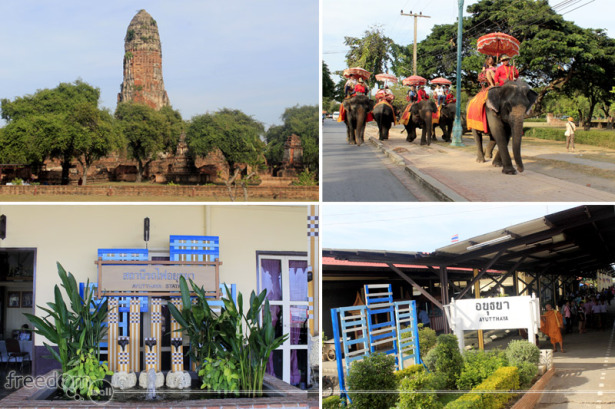
Our first stop was the Wihan Phra Mongkhon Bophit. The sanctuary, a.ka wihan or vihan, houses a large bronze Buddha image that is 12.5 meters high (without the base) and 9.5 meters wide (widest point across the lap). It is one of Thailand’s largest.
The image is believed to be built between 1448 to 1602 AD and was originally situated at the east side of the old palace. Later, it was moved to the west side, and then a Mondop or shrine was built to shelter it. The shrine was destroyed during the Burmese invasion in 1767. By then, its head and right arm broke. It was only in 1956 when the image was restored and the wihan was rebuilt.
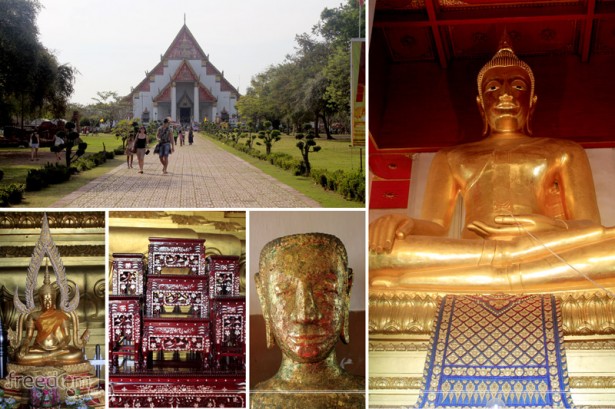
Right beside the wihan is the Wat Phra Si Sanphet. It features three chedis or stupa (mound-like structure containing Buddhist relics) which safeguard Ayutthaya’s three kings. The chedis appeared to undergo some reconstruction because some part were already made of concrete.
The entry fee to Wihan Phra Mongkhon Bophit is TH฿50.
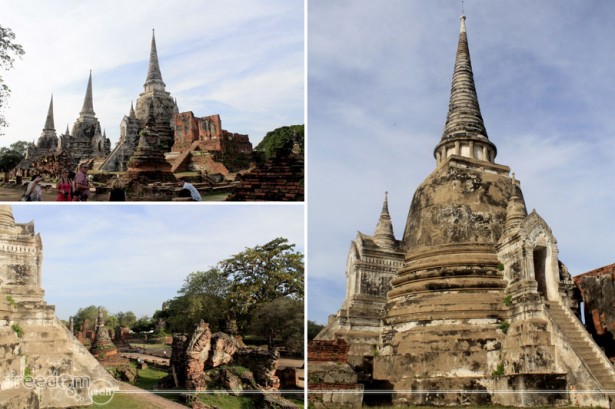
Our third stop was the Wat Maha That or the “Monastery of the Great Relic” which was built on the later part of the 13th century (between 1370 – 1388).
We spent some ample time exploring the accessible portions of the ruins and took some photos as well. An access fee of TH฿50 can be paid at the entrance.

Our supposed 4th stop was Wat Ratchaburana but it was undergoing some restoration. The main pagoda was covered with a net, so we decided not to proceed.
We headed to Wat Lokayasutha next. It features a huge reclining Buddha image dressed in regal attire. With very few remains after the Burmese invasion, it was restored 1954.
According to the text on the site, the Reclining Buddha depicts the moment at which a giant named Asurindarahu, who was too proud of his huge body, was unwilling to pay respect to the Buddha. The Buddha wanted the giant to be less arrogant, so He turned himself larger than the giant.
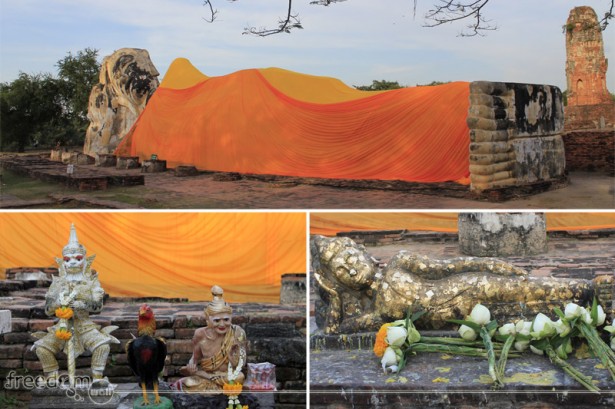
We covered the four important temples in Ayutthaya at a shorter period but there are a lot more to see. So, allocate at least a day if you plan to visit the site. And if you are interested with the complete history try availing the video narrative for only TH฿200.
At the end of our tour, we made a quick stroll near the train station. We later found out that there was a cheaper option. Bicycles were available for rent at TH฿40/day. If you worry of losing the bike when entering temples, you can ask for locks to secure it.
Well, it wasn’t really a bad option for us since we only had 3 hours and we had no idea which temples to visit first.
How to Get there (From Bangkok)
By Bus:
- Take BTS (Sky Train) to Moh Chit station or MRT to Chatuchak Park station and take a 5-min taxi ride to the bus station. Fare depends on your starting Point.
- Buses leaves every 30 minutes from 4AM – 7PM which will take 1.5-2 hours to reach Ayutthaya. Bus fare is TH฿50.
By Train:
- Take MRT to Hua Lamphong station and exit to Bangkok Railway station.
- Several Lines passes Ayutthaya, depending on your time of visit. Trains leave every hour, so just tell the teller that you’re heading to Ayutthaya. Third class tickets cost around TH฿15 or TH฿20 depending on the train line. Travel time is 2 hours. Make sure to catch the last returning train if you plan to return to Bangkok on the same day.

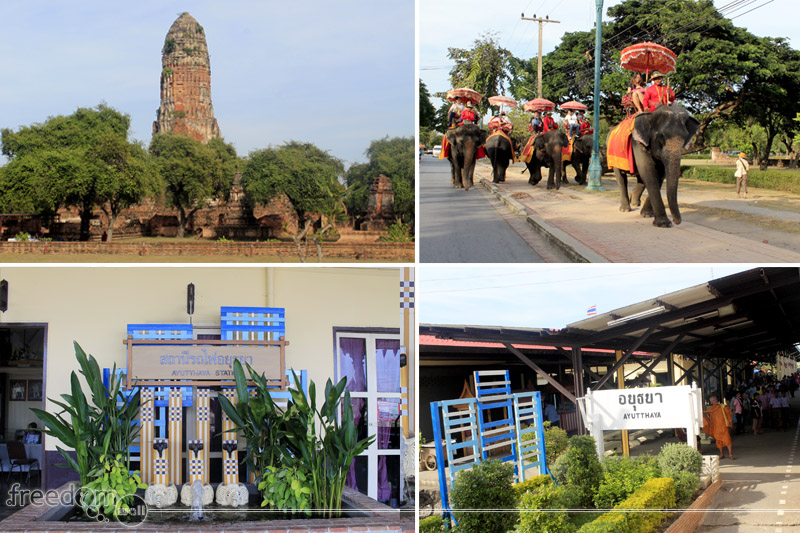

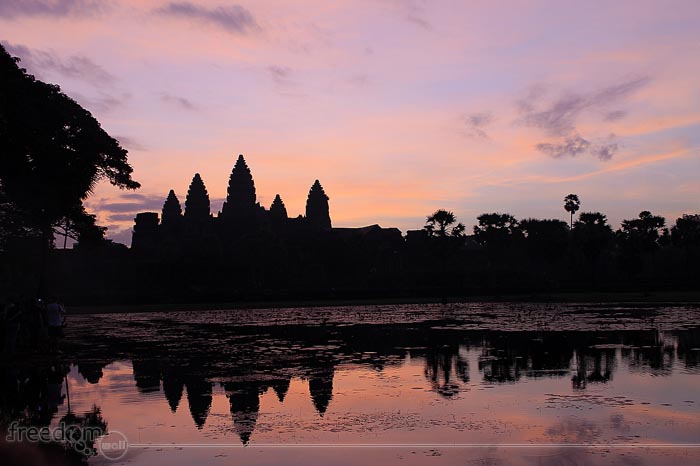
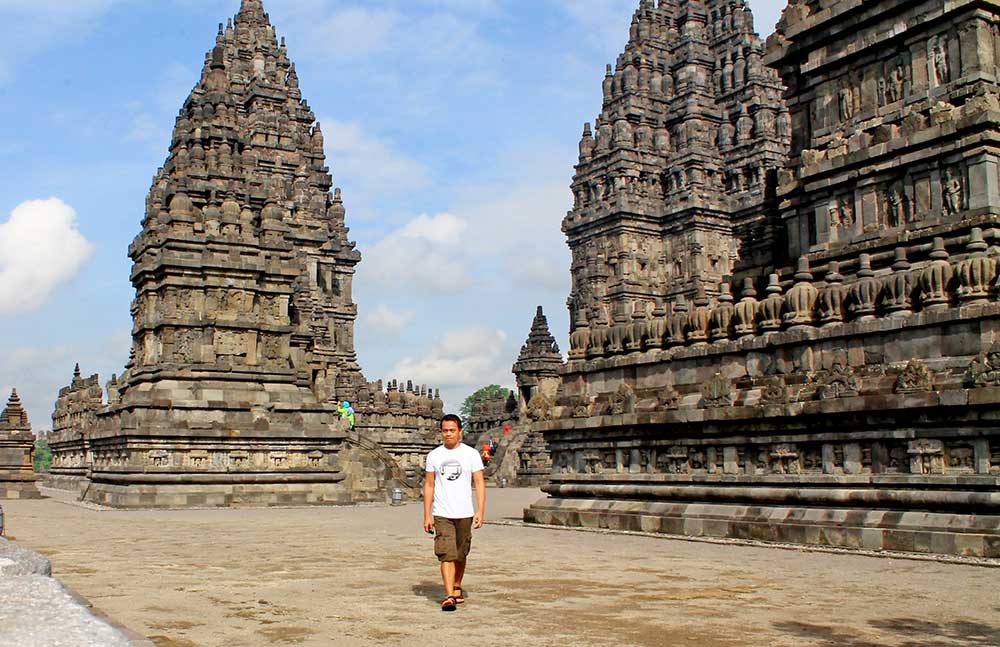
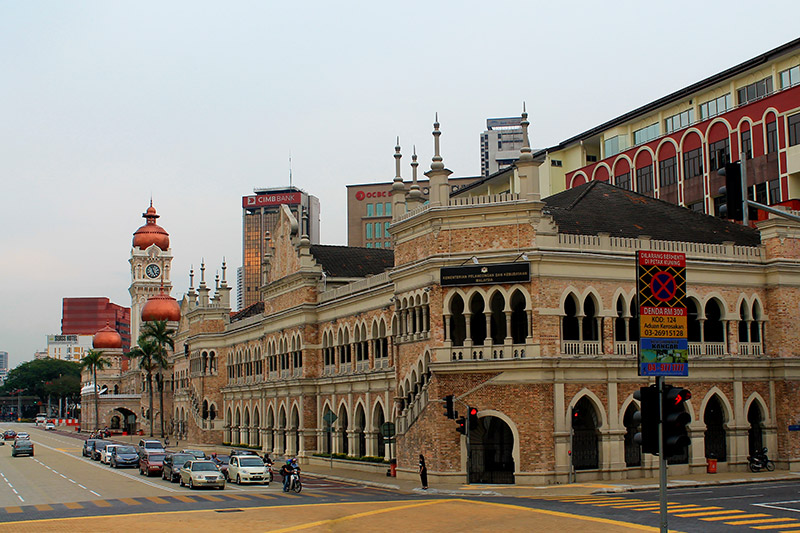
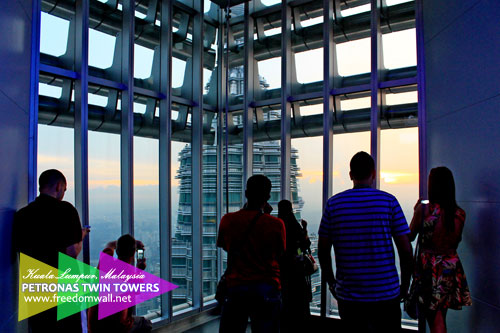
I would like to thank you for the efforts you have put in writing this site. I am hoping to see the same high-grade blog posts from you in the future as well. In fact, your creative writing abilities has inspired me to get my own blog now 😉